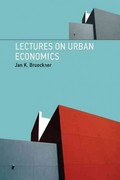Answered step by step
Verified Expert Solution
Question
1 Approved Answer
D. Someone suggests that you sidestep all of the potential issues with unit roots, estimate the model in differences, and come up with a causal
D. Someone suggests that you sidestep all of the potential issues with unit roots, estimate the model in differences, and come up with a causal effect of WTI on Henry Hub: log = + log + . Why might interpreting as a causal effect be a problem given that your company and others can substitute between producing oil and gas? Question 4 (25 points) Your firm wants to understand the relationship between well-length and productivity, so you get data on gas wells in Louisiana's Haynesville shale. Wells are indexed by , and multiple wells can be drilled from the same square-mile section of land, . Production is total gas production from the well during the first year. Well length is measured for each well, and geological quality is shared between wells in the same section. You estimate the following model log = + log + This is model (1) in the table below, and sigma2 is the estimate of + 2 . . -------------------------------------------------------------------(1) (2) (3) -------------------------------------------------------------------Geological quality 0.0729*** 0.0669*** 0.0658*** (0.00712) (0.00730) (0.00729) Log well length 0.901*** (0.0455) Is exploratory 0.891*** (0.0454) 0.881*** (0.0454) -0.114*** (0.0334) -0.134*** (0.0339) Avg royalty rate 1.600** (0.535) Constant 6.269*** 6.474*** 6.243*** (0.382) (0.385) (0.391) -------------------------------------------------------------------Observations 1202 1202 1202 sigma2 0.255 0.252 0.251 -------------------------------------------------------------------Standard errors in parentheses * p<0.05, ** p<0.01, *** p<0.001 1. Using model (1), how do you test whether there are diminishing returns to well-length at the 0.1% level? (Note this is LESS than the 1% level!) a. What are your null and alternative hypothesis? b. What is the formula for your test statistic? c. Compute the test-statistic. d. What are your critical values and rejection region? e. Do you accept or reject? Why? f. What is the -value of your test? 2. Having understood a bit more about the production process, your firm now wants to forecast production from wells based on geology and well-length. Write down the formula for how you would forecast = [ | , ] (this NOT log , but rather the exponential of this). 3. The different sections have differing numbers of wells depending on how many additional wells the company decides to drill after it finds out the productivity of the first well (denoted by = 1). a. What does could this imply about the value of [ | = 1] and [ | > 1]? b. 4. If you estimate your model with exploratory wells (those with = 1) and subsequent infill wells, > 1, which coefficient does this affect? In which way could you forecast be biased? Upon further consideration, you add a dummy to denote whether the well is an exploratory well and estimate model (2). Test that infill wells are more productive than exploratory wells at the 5% level. What are your null and alternative hypotheses? Critical values and rejection region? What do you decide? 5. 6. When firms acquire the right to drill for oil and gas, the contract specifies a royalty rate they must pay to the landowner. This is simply a share of production revenues. In the Haynesville, royalty rates range between 12.5% and 25%. Finally, just for fun, you add the average royalty rate to the model in addition to the exploration dummy. This is model (3). a. Does the royalty rate have a statistically significant predictive effect on the production from a well? b. Is this effect causal? That is, do higher royalty rates cause wells to produce more? Why or why not? c. What might this imply about the statistical relationship between the error term and the variables on the right hand side? d. What is the consequence for your estimates? Suppose you are considering acquiring a mineral lease from another firm which has paid a 25% royalty (high) on the lease. When forecasting likely production from this this location you are considering acquiring, which model should you use to forecast - model (1), (2), or (3)? Provide a well-reasoned justification for your
Step by Step Solution
There are 3 Steps involved in it
Step: 1

Get Instant Access to Expert-Tailored Solutions
See step-by-step solutions with expert insights and AI powered tools for academic success
Step: 2

Step: 3

Ace Your Homework with AI
Get the answers you need in no time with our AI-driven, step-by-step assistance
Get Started


